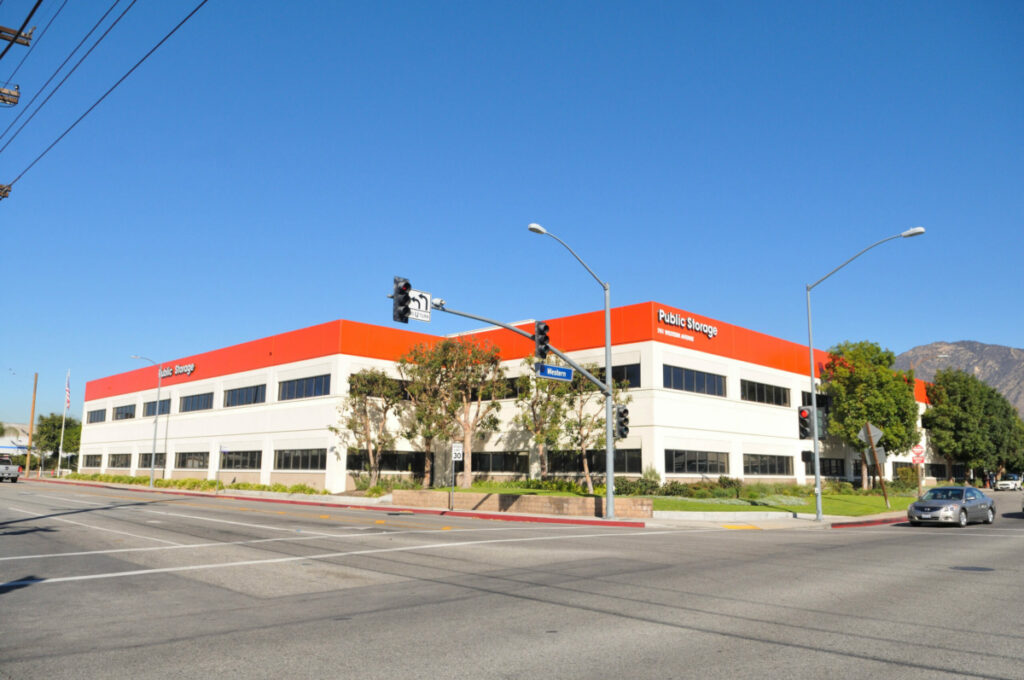
The demand for self-storage continues as more people working from home and an increase in multigenerational living add to the more traditional reasons that people need to store belongings offsite, such as moving and downsizing, growing families and living with roommates, according to RentCafe.
“I’ve been in storage for 22 years and I’ve never seen demand be so strong as in the second half of 2020,” said Brett Henry, co-founder of Torrance-based Trojan Storage. “And then it’s been very strong again in 2021 and 2022. It just continued.”
Companies are meeting that demand by constructing more self-storage units. Century City-based developer LaTerra Development has formed a joint venture with a fund managed by Macquarie Asset Management to launch a self-storage development platform. The joint-venture partnership plans to deploy as much as $300 million to develop ground-up self-storage facilities in Los Angeles and other Southern California markets.
The partnership has three projects underway, including 55,000 square feet in Mar Vista; 63,000 square feet in Van Nuys; and 77,000 square feet in the North Hollywood/Burbank area. The companies are actively seeking additional sites for development.
“Self-storage is complementary to our core apartment development business,” Chris Tourtellotte, managing director at LaTerra Development, said in a statement. “Self-storage is part of the neighborhood ecosystem and supports housing density and small businesses, a primary goal for LaTerra.”

Facilities
Henry and his partner John Koudsi co-founded Trojan Storage, which has sites in locations including Sun Valley and Colton.
“We opened one in Glendale and we’ve opened one in the city of Commerce,” Henry said. “We’ve got one in Camarillo and two in the Valley that will start construction next year.”
The company has 40 active storage facilities and 10 under construction, plus two more sites on the East Coast.
“We use a combination of bank debt for 75% of the funds we need, and we inject 25% with our money and our investors base’s money,” Henry said.
Driving Trojan’s expansion has been the increase in demand for self-storage units over the past 30 months.
“Covid definitely accelerated demand (March through May 2020),” Henry said. “After that, you started to see a lot of demand in the bigger cities where you’ve got all these lockdowns and now only the parents at home working but you’ve got the kids. Frankly, we found a whole new wave of customers.”
According to RentCafe, 20% of home renters living in apartments utilize self-storage, while 25 % of renters living in single-family homes rely on self-storage.
The group also found that 44% of self-storage users are Gen X renters, followed by baby boomers with 38% and millennial renters with 30%.
Self-storage had seen steady growth even before the pandemic.
“Storage has grown in demand over the years because people really have been using us as that extra closet,” Henry said.
“Self-storage continues to demonstrate its resiliency across the cycle,” Tourtellotte said. “The pandemic accelerated demand as people relocated and cleared rooms to make way for home offices while small businesses stored inventory, excess furnishings and other items.”
LaTerra Development recently hired industry veteran John Wilson as vice president of asset management. Wilson previously served at Storage West for 12 years and at Public Storage Inc. for 13 years.
High prices
At an average of $220 a month, the Los Angeles-Long Beach-Santa Ana axis has the most expensive self-storage rates in the country, according to Neighbor.com.
Compare this to Oklahoma City, which averages $79 a month — the lowest rate in the country.
There’s a reason L.A. prices are highest: there aren’t enough self-storage units available to meet demand. Part of the reason why may be the high cost of land to develop self-storage facilities in the Golden State.
“Los Angeles has the lowest existing supply of self-storage per capita of almost any city in the U.S.,” Tourtellotte said. “We think it’s an ideal time to launch this new platform.”
Other locally based companies are betting big on self-storage.
Tarzana-based Gelt invested $41 million to buy eight self-storage facilities in the Memphis, Tennessee, area two years ago.
Last year, Glendale-based Public Storage paid developer All Storage $1.5 billion for 56 self-storage facilities located in the Midwest. The portfolio, which covers 7.5 million square feet, spans high-growth submarkets in Dallas-Forth Worth, Oklahoma City, and Killeen, Texas. The big bite brings 60,000 new customers into the Public Storage fold.
Public Storage, the self-storage real estate investment trust that pioneered the industry, celebrated its 50th anniversary on Sept. 30 by having Chief Executive Joe Russell ring the New York Stock Exchange opening bell.
“We are honored to celebrate our 50th anniversary by ringing the NYSE opening bell,” Russell said in a statement. “On behalf of the current and prior management, I want to thank the Public Storage team for their invaluable contributions and our expanding customer base for their continued confidence in us. As we reflect on the successes of our past and present, I am very optimistic and excited about our future.”
Entrepreneurs Wayne Hughes and Ken Volk founded Public Storage in 1972 with its first location in El Cajon. Today, the REIT owns or manages more than 2,900 self-storage properties nationwide totaling approximately 200 million net rentable square feet.
As the self-storage industry’s largest operator, it has more than 5,000 employees and serves about 1.7 million customers.
Public Storage also holds a 35% interest in Shurgard Self Storage SA, which has 256 facilities in seven European countries, covering approximately 14 million net rentable square feet.
